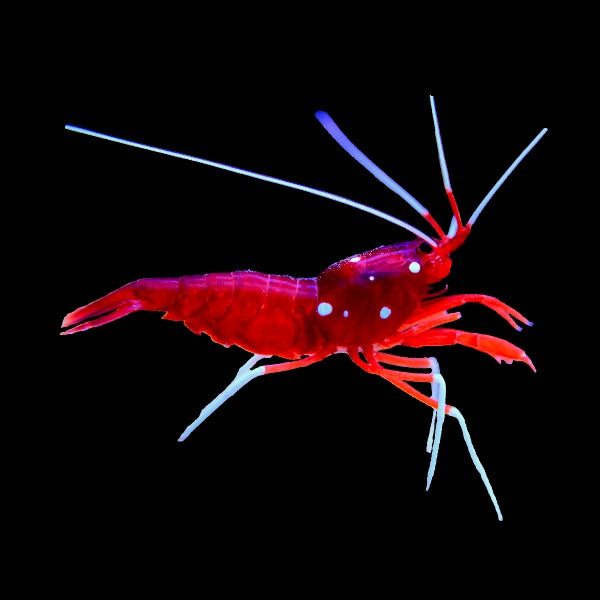Description
The Blood Fire Shrimp, scientifically known as Lysmata debelius, is a species of marine shrimp that is highly popular in the marine aquarium hobby due to its striking appearance and its ability to serve as a cleaner organism in reef tanks. It is also commonly referred to as the Blood Shrimp or Blood Red Fire Shrimp.
Here are some key characteristics and information about the Fire Shrimp:
Appearance: The Fire Shrimp is known for its vibrant, blood-red coloration. It has long, slender, and translucent body and two large, clawed front appendages. These claws are often banded with white or pale stripes, providing a beautiful contrast to the bright red body.
Size: These shrimp typically grow to a size of about 2 to 3 inches (5 to 7.5 centimeters).
Habitat: Fire Shrimp are native to the Indo-Pacific region, and they are found in coral-rich environments, particularly on reef slopes and lagoons. They prefer warm, tropical marine waters.
Behavior: These shrimp are known for their interesting behavior, including their cleaning services. In the wild, they often establish cleaning stations on reefs where they clean parasites and dead skin from visiting fish. In captivity, they may also exhibit cleaning behavior, which can benefit other tank inhabitants.
Diet: Fire Shrimp are primarily detritivores, meaning they feed on small particles, dead organisms, and detritus in the aquarium. They may also scavenge for uneaten food and clean parasites from other fish.
Aquarium Keeping: Fire Shrimp are popular in marine aquariums, particularly in reef tanks, due to their striking appearance and cleaning behavior. They are generally peaceful and can be kept with a variety of other marine fish and invertebrates. However, it's essential to provide them with a well-maintained tank with hiding places and stable water quality. It's also important to ensure the tank is well-established, as they require a stable source of food.
The Fire Shrimp is not only a visually appealing addition to a marine aquarium but can also provide a beneficial cleaning service to other tank inhabitants. To ensure their well-being in an aquarium setting, it's crucial to maintain a suitable environment, stable water conditions, and a proper diet.










